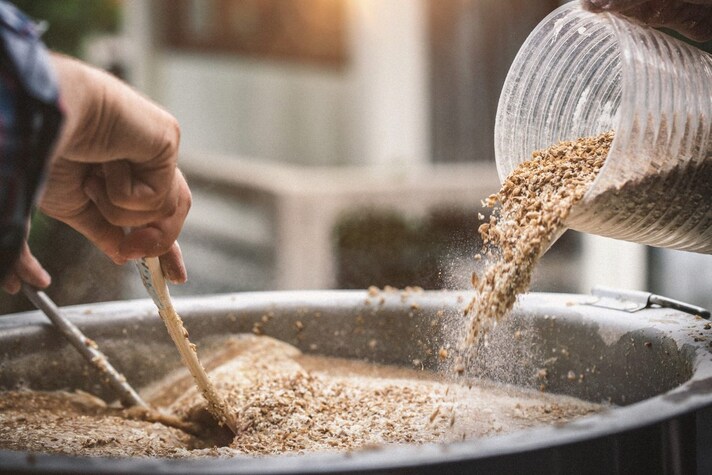
More and more often we read about a particular type of beer: "unfiltered". But what is unfiltered beer? This term refers to a production technique that, as the name suggests, avoids the filtration process typical of industrial beers. The process separates the solid parts, which can be yeast or other sediments, from the liquid part. This leads to a more cloudy color and a more intense flavor given by the "disturbing" elements that are eliminated in filtered, clear and transparent beers.
What is Unfiltered Beer?
Unfiltered beer is a beverage that retains all of its natural characteristics intact, without undergoing the filtration process. This means that yeasts, proteins and other suspended particles that would normally be eliminated during filtration remain inside.

The presence of yeasts and other particles gives unfiltered beer a more complex and full-bodied flavor, with fruity, spicy or slightly bitter notes depending on the style. The aromas are developed more fully, offering the drinker a much richer sensory experience. Most unfiltered beers are produced by craft breweries, which prefer traditional and natural production methods. It is difficult to find industrial unfiltered beers because the mechanical process that leads to the clarity of supermarket bottles is the result of great research into product standardization. The goal of industries is to make a product that is regular and identical everywhere in the world, the goal of craft breweries is instead to make each bottle (or each batch) unique in its own way.
An unfiltered beer is easily recognized by its cloudy appearance and the presence of a slight sediment at the bottom of the bottle. In addition, the labels of unfiltered craft beers often indicate "unfiltered" or "natural".
The Differences Between an Unfiltered and a Filtered Beer
The differences between an unfiltered and a filtered beer lie mainly in the production process and the organoleptic characteristics of the final product. The former are not filtered at the end of the production process and therefore retain all the components of the fermentation, the latter remove most of the yeasts. This makes the unfiltered cloudy and opaque, with a sediment at the bottom and the filtered clearer, clearer and brighter.

Another fundamental aspect is the flavor that in the former is more "alive" thanks to the presence of active yeasts that continue to ferment in the bottle, giving notes of bread crust or yeast while in the latter it is cleaner and lighter, with less intense aromas. When tasting this difference is also felt with the "touch" because the unfiltered ones are more full-bodied and have a light carbonation while the filtered ones are smoother and "cleaner".
The fundamental difference that led to this separation, however, lies in the duration: filtered beers generally have a longer shelf-life thanks to the removal of yeasts, which could cause refermentation and this aspect is fundamental if you have to produce beer on an industrial level, for hundreds of thousands of bottles per year. Unfiltered beers, on the other hand, can undergo slight variations over time due to the presence of yeasts. Our advice is to taste both types to understand which one you prefer.
Why do Unfiltered Beers Cost More?
It may seem counterintuitive, in fact: if unfiltered beers undergo one less process, then why do they cost more? First of all, for all the other processes: unfiltered beers are often produced by craft breweries that use more traditional and manual production methods. These methods require more time, attention and care, increasing production costs. Furthermore, the small production batches, typical of craft breweries, do not allow the same economies of scale as large industrial breweries.

To have a quality product that does not destroy all the bottles due to re-fermentation, you also need high-quality ingredients such as special malts, fine hops and selected yeasts. These ingredients often cost more than those used in the production of mass-produced beers. This selection does not, however, avoid a shorter shelf-life and, although it may make you angry, the volatility of the investment is ultimately paid for by the customer: more complex and rapid logistics to ensure that the beer reaches the consumer in the best conditions. This need to manage an efficient cold chain and accelerate distribution times can increase costs. Lastly, but not for all products, unfiltered beers are often positioned as premium or niche products, aimed at a public of enthusiasts who appreciate the complexity and authenticity of the product. This positioning allows producers to ask for a higher price, since consumers are willing to pay more for a product perceived as higher quality and more authentic.
;Resize,width=767;)
